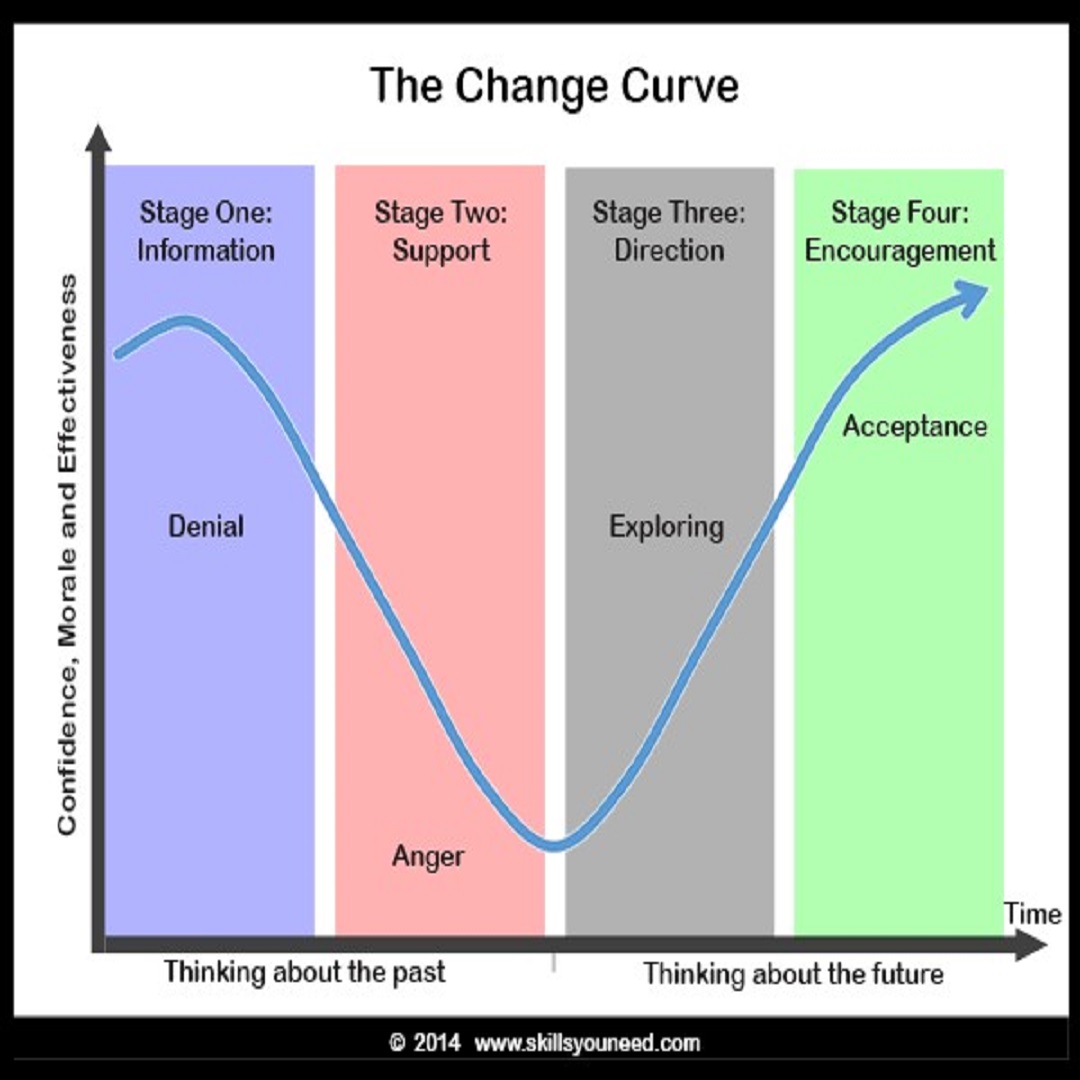As humans, we typically resist change because our bodies try to maintain a state of homeostasis, or equilibrium. Simply put, most people like predictability, comfort, and stability. However, ironically, change is one of the few constants throughout our lives and has impacted us globally during the pandemic. If we aren’t changing we aren’t thriving and growing! Therefore, I’ve identified change management as a vital key to self-management.
Change management is a big topic in the professional world because large organizations frequently have a difficult time implementing change. For a large organization, even a seemingly simple change can affect how hundreds or even thousands of employees work. But they’re not the only ones. The change can also have consequences for the organization’s customers and suppliers.
Change Management
So, what is change management? In a professional context, it is, “...the discipline that guides how we prepare, equip and support individuals to successfully adopt change in order to drive organizational success and outcomes.” (Prosci).
On an individual level, the concept of change management is very similar and is how to prepare ourselves for change. As a leader, mastering the processes of change management in your own life, allows you to successfully manage the changes at work that affect the lives of those you lead.
The Change Curve
The Change Curve was originally developed by Dr. Elisabeth Kubler-Ross to illustrate how individuals come to terms with accepting they have a terminal illness. Despite this, it also does a great job of illustrating reactions to change more broadly. The goal of change management is to accelerate acceptance, and make the curve shallower so that confidence, energy, and morale don’t bottom out.
Stage 1- Receiving the news or change. This is where reality hits and leads to shock or denial. Combat this response with communication and information. Details and clarity about what is happening and its direct effects are useful.
Stage 2- Reaction to the news or change. Common emotions people experience are resentment, anger, and concern. Stage 2 is the “make or break” stage for change. Without proper support, anger intensifies, and energy and morale continue to suffer. This can ultimately derail the effort altogether. However, obtaining adequate support with information and solutions for pain points can prevent morale from dipping so low and accelerate the overall process.
Stage 3- With the support provided in the previous stage, exploration is now possible. However, direction and guidance are needed to facilitate and encourage this. For example, building a solid foundation through positive experiences and exposure to the “new” leads to acceptance. Note that this stage can take a while as energy and morale rebound.
Stage 4- Acceptance. The change should become natural now. However, it is still important to receive encouragement and praise for adopting the change as well as for the hard work that was put forth.
All organizational change comes down to individuals adopting change. As stated earlier, successfully managing change in your personal life prepares and enables you to manage the changes at work that will affect those you lead.
If you’d like to discuss the benefits positive change management can bring to your professional life and to those you lead , contact me.


